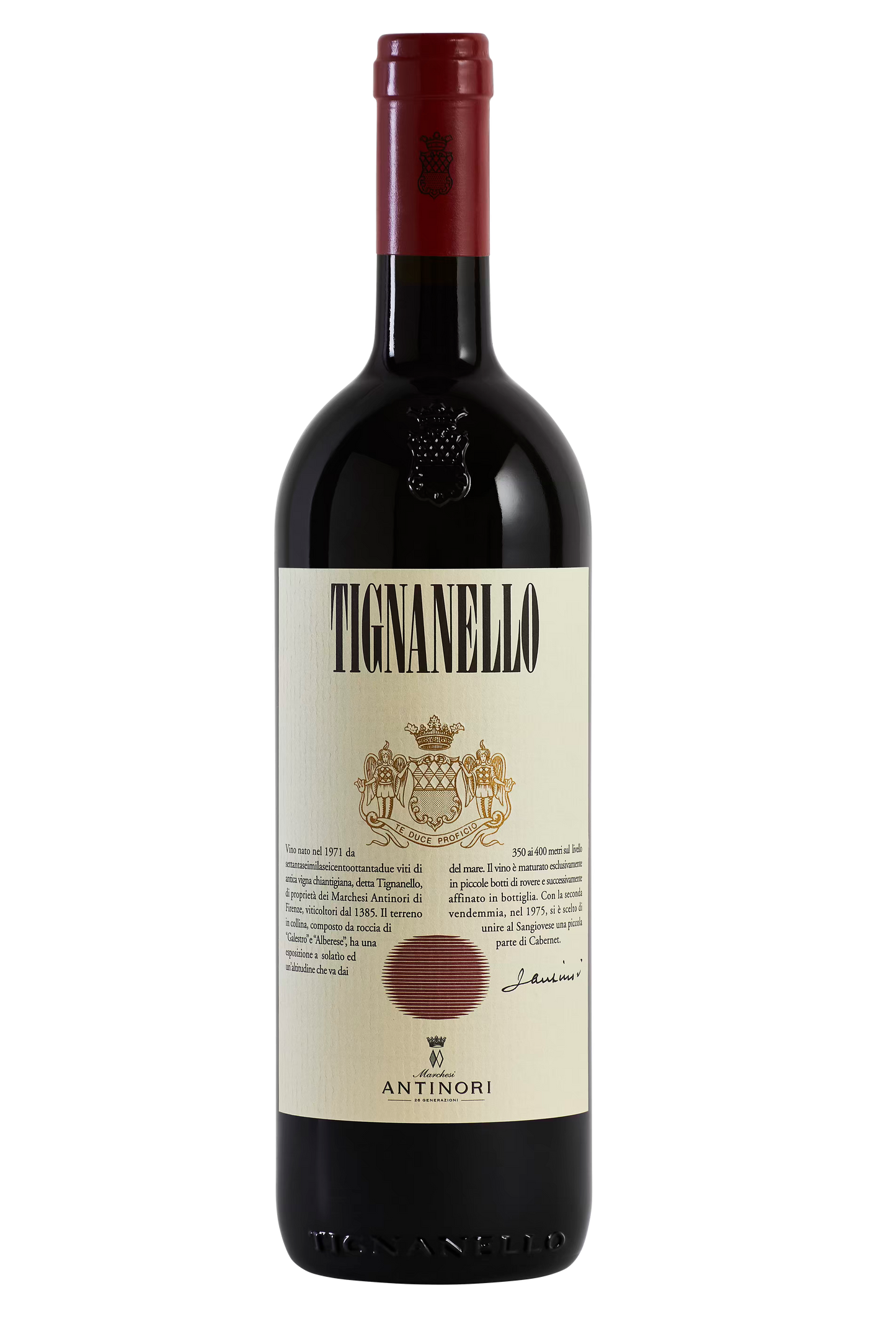2019 Marchesi Antinori "Tignanello" 0,75 lt
Tignanello 2019 is a deep ruby red wine with a complex nose that includes notes of red fruits, strawberries, pomegranate, apricots, and peaches in syrup, along with hints of vanilla, dried flowers, chocolate, and nutmeg. The bouquet features coffee, caramel, and Mediterranean herbs. On the palate, it is graceful and mouth-filling, showcasing silky tannins and a long finish with roasted coffee and bitter chocolate notes. This vintage received high ratings of 96 points from Wine Advocate, Wine Spectator, and Falstaff, and 95 points from Wine Enthusiast. The 2019 growing season in Chianti Classico had normal climatic conditions, leading to optimal grape ripeness. Tignanello is historically significant as the first Sangiovese aged in barriques and the first contemporary red blended with non-traditional varieties like Cabernet. The label was designed by Silvio Coppola in 1974, reflecting a minimalist aesthetic.
Tignanello 2019 is a deep ruby red wine with a complex nose that includes notes of red fruits, strawberries, pomegranate, apricots, and peaches in syrup, along with hints of vanilla, dried flowers, chocolate, and nutmeg. The bouquet features coffee, caramel, and Mediterranean herbs. On the palate, it is graceful and mouth-filling, showcasing silky tannins and a long finish with roasted coffee and bitter chocolate notes. This vintage received high ratings of 96 points from Wine Advocate, Wine Spectator, and Falstaff, and 95 points from Wine Enthusiast. The 2019 growing season in Chianti Classico had normal climatic conditions, leading to optimal grape ripeness. Tignanello is historically significant as the first Sangiovese aged in barriques and the first contemporary red blended with non-traditional varieties like Cabernet. The label was designed by Silvio Coppola in 1974, reflecting a minimalist aesthetic.

